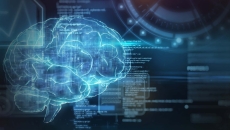Bill Siwicki
In the first installment of Healthcare IT News' newest feature series, five hospital and health system IT leaders describe how and where they're planning to spend on artificial intelligence and machine learning.
That's one finding from new research from cybersecurity firm CyCognito, whose CEO discusses that danger and describes some risk-mitigation strategies.
Two scientists from University of Florida Health offer a deep-dive look at how they're training GatorTron, their leading-edge natural language processing model, with billions of words for an array of EHR and analytics use cases.
Patient safety advocate Mark Neuenschwander is now working to make hospital intravenous therapy as safe as humanly – and robotically – possible.
The idea is to integrate different methods of modeling to overcome the limitations of individual research approaches – and to gain the most public health insights from each.
Moving away from simple phone calls, 82% of the health system's telemedicine visits are now video and audio visits.
The funds have built a robust remote patient monitoring and virtual care infrastructure that has proved immeasurably helpful, especially during the pandemic.
The CEO of CynergisTek discusses findings from the consulting firm's annual cybersecurity report, and talks about the future of security in healthcare.
The vendors discovered that distributed ledger technology was much faster and more efficient, while maintaining necessary privacy and security.
The technology has helped the health system navigate the pandemic while expanding into remote patient monitoring and other types of virtual care.










